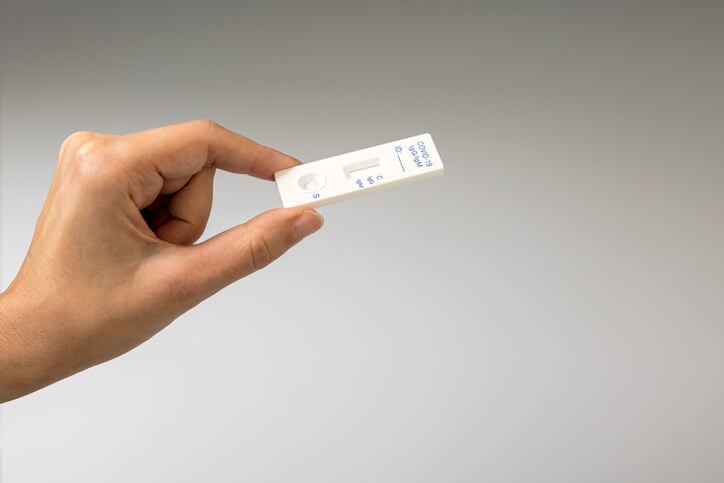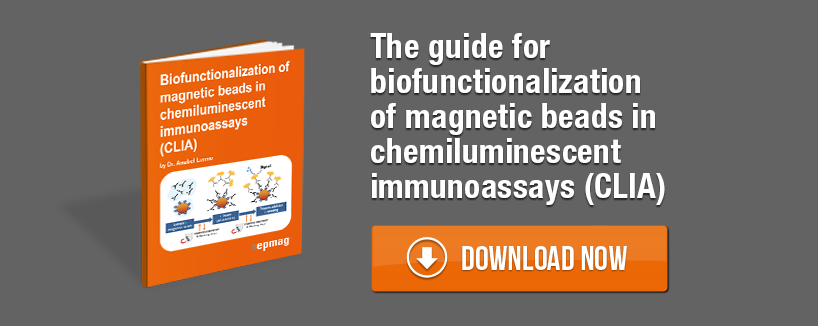When developing a CLIA it is helpful to understand what is available commercially. CLIA kits are available from many different companies that formulate reagents or components of the assay specifics for the analyte to detect and tailor made for the company analyser (platform). The solid phase can be based on superparamagnetic beads or polystyrene beads usually kept in liquid formulation. In both cases these beads require a CLIA-label reagent, discussed in more detail earlier in this ebook.
The CLIA label can be based on either a flash chemiluminescent kinetics (such as using an acridinium ester label or an isolumino derivative) or a glow chemiluminescent kinetics (such as using alkaline phosphatase or horseradish peroxidase).. There are many chemiluminescent platforms from companies such as Siemens or Abbott. Companies aim to make their platforms with high throughput, panels with a broad range of assays available and easy to use for multiple types of assays.

CLIA-kit components
CLIA kit can come with reagents (beads, tracer, assay buffer…) in a unique cartridge or individual vials, depending on the company and analyser. The kit will contain at leastmagnetic particles andtracer reagents. There is a usual characteristic for all platforms, magnetic beads are required to be homogenized on-board the analyzer, in order to prevent bead sedimentation.
On the other hand, tracer is kept in opaque vials to be carefully protected from light exposure, maintaining its chemiluminescent properties. Calibrators and controls are also not typically included in the reagent kit but there are some companies that include in the reagent cartridge also the controls. Sometimes calibrators can be reagent lot dependent but is more versatile if calibrators can be used for any reagent lot. When the stability of calibrators and controls is compromised in liquid formulations, lyophilization of these materials can be an option to enlarge their stability although is worst from a point of view of easy to use for end users.
Instrumentation modules in a CLIA analyser
There are three common modules in main analysers needed to perform CLIA assays with magnetic beads.
It is required to have a washer station for the several washing steps included in the CLIA assay protocol. Together with a magnetic separation module integrated with the washer for the retention of the beads during the washing steps. Magnetic separation module require to be carefully designed to be strong enough to capture the beads, retaining the beads during the washing and preventing the stuck of the beads for an easy homogenization of the beads once washing steps have been performed.
The detector mode is also a common module to detect the light emitted from your chemiluminescent reaction.
All these three modules are integrated for common automated platforms for either benchtop analyzers or high-throughput routine analyzers.
Related news




